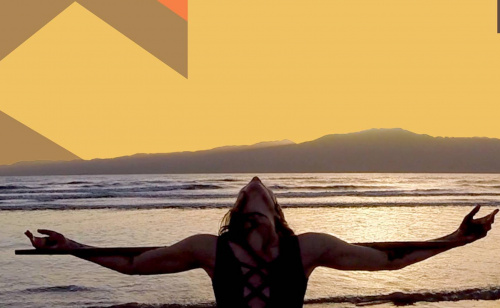Karanga
Q Theatre, Rangatira, Auckland
05/08/2021 - 05/08/2021
Production Details
KARANGA is a powerful new interactive Māori contemporary dance work KARANGA: in three parts is an inter-arts performance inspired by Merenia’s mother; the late Tiahuia Te Puea Hērangi Ramihana Gray (Ngāi Tahu, Rangitāne, Tainui).
The art of Karanga is explored through inter-generational relationships and the escalation of climate change.
Dripping with talent, check out to find out who is collaborating on Karanga there is more information here https://www.canva.com/design/DAEgRuu6Wj8/CNMr9UVMNRiEAfLL3VYe3w/view?utm_content=DAEgRuu6Wj8&utm_campaign=designshare&utm_medium=link&utm_source=publishsharelink#4
“The Kaikaranga ensures that the mana of everyone on the marae has been heightened because the tikanga has been carried out in the way that our ancestors have done so for aeons”. (Tiahuia Gray)
Led by Artistic Director and award-winning choreographer Merenia Gray and co-creators Gareth Farr, Toni Huata, Mary-Lyn Chambers, Emma Mortimer, Jo Kilgour, Jeanine Clarkin, Miriama McDowell, Jason Te Kare, Luka Turjak, Tānemahuta Gray, Ariana Tikao and dancers.
Maori contemporary dance , Dance , Contemporary dance ,
60 Mins
Potent feminine energies that characterise mana wahine
Review by Jenny Stevenson 07th Aug 2021
In a multi-media performance created to honour and document the memory of her mother kaikaranga Tiahuia Gray, choreographer Merenia Gray harnesses the potent feminine energies that characterise mana wahine , setting a pathway designed to connect to the metaphysical realm in a similar fashion to the way a karanga (call) connects to ancestral spirits.
Beginning the journey, the first image of the work sets the tone – a link between the mystical and physical worlds depicted by ropes suspended from above. In short order these strands are deftly woven into an umbilical-like cord by a group of dancers with one tugging downwards as an anchor to Papatūānuku (Mother Earth). Their bowing and dipping movements become swifter until the rope is finally knotted, starkly hanging and evoking in its solidity a silent sentinel. Dancer, Brydie Colquhoun then slowly climbs the rope before abruptly suspending herself, creating an inverted form that resembles a foetus, or the downward trajectory of birth.
Many differing strands constitute the disparate feminine energies on display: the dancers themselves – Colquhoun. Abbie Rogers, Georgia Brokenshire, Olivia McGregor, Faith Schuster and Natania McLeod Roberts are strongly contained, graceful and fully connected to the ground. Tipuna Wahine (female ancestors) appear to be represented here by a group of mature women who slowly walk across the stage, moving with a quiet dignity, fully controlled and inviolable, or who dance simple sequences with an innate and absolute joy of movement.
Exuberant songstress and kaikaranga Toni Huata, is a strong presence, radiant and exuding a larger-than-life energy. She gifts a simple wooden stave to actress, Miriama McDowell, a spirited storyteller, who takes the lead in telling the tale of Tiahuia first as a young girl adopted by Princess Te Puea, when she spent her formative years on Tūrangawaewae Marae and then as a young woman, when she is beautifully represented by her grand-daughter Elliette O’Brien, standing quietly still and speaking from the heart. The work is contextualised through historic projected images of Tiahuia and the letters that she wrote.
The dancers use their own staves to perform simple mau rākau (martial art) sequences, then stick games or pounding the floor in rhythmic patterns. A highlight is a scapular dance, when the dancers, grasping their staves in front of them, present their bare backs to the audience, creating sensual undulating movement illuminated by the overlay of strips of light. Later they thread their arms through the sticks and dance through the projected clouds as mystical birds.
Accompanying these different segments, the music becomes a strongly evocative tool. Taonga Pūoro are played by Ariana Tikao and Gareth Farr’s mesmeric score ascends and dips utilising soaring operatic voice and percussion to weave a spell of intrigue. Interspersed throughout are various karanga and waiata – including actual recordings of Tiahuia performing karanga. Huata’s own music features prominently and she returns to sing a joyous rendition of Hareruia (Hallelujah) arranged by Farr. The work concludes with the full cast onstage.
Lighting by Jo Kilgour creates a changeable landscape that augments the inherent narrative and the energies of the women. The costume design by Jeanine Clarkin accesses an earlier era: the dancers clothed in black with floating skirts and a sumptuous medley of colour and texture in a kimono-type costume for Huata.
As a documentation of a woman’s life, this work represents a novel approach to archiving and bringing the vibrancy of a life well lived to the stage. It is a testament to the transcendent nature of filial love on behalf of Gray. It is also being filmed by Mary–Lyn Chambers with DOP Adam Luxton.
Copyright © in the review belongs to the reviewer





Comments